Lepidium campestre
A widespread pepperweed from Europe
Lepidium campestre fieldcress
This is an annual plant in the mustard family that is native to Europe but commonly found as an invasive weed in North America. The most noticeable characteristic of this species is the cluster (raceme) of flowers that fork off the stem. These racemes contain many white flowers that later turn green. It blooms in late spring and early summer. After fertilization, the flowers develop into flat and oval seedpods. These pods are about 6 x 4 mm in size, each containing two seeds. The raceme may have flowers at the top and seed pods below.
There is a basal rosette of leaves and stem leaves that are alternate and arrow-shaped and that clasp the stem. The clasping causes the leaves to point upwards. These are covered with small hairs, giving the plant a distinct fuzzy appearance.
The field pepperweed can reach a height of 2 feet, but is often smaller. The plant is edible and can be eaten raw in salads or boiled as a potherb. The seeds can be ground into a spice that has a taste intermediate between pepper and mustard. It is also called the beer bottle plant or cowcress is some places. In Medieval Europe it was called mithridate mustard and was one of 65 ingredients in a preparation called mithridate, a semi-mythical remedy for poisoning. The plant was highly sought after for that reason.
Habitat & Range
Fields, roadsides, man-disturbed habitats.
Present throughout the state.
Wetland code: Not classified
Phenology
Flowers April through August.
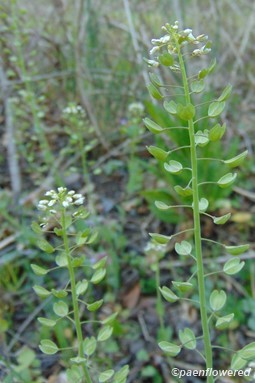
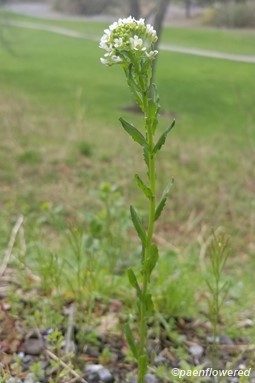


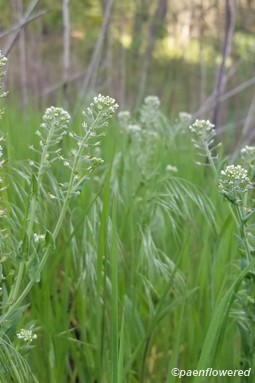
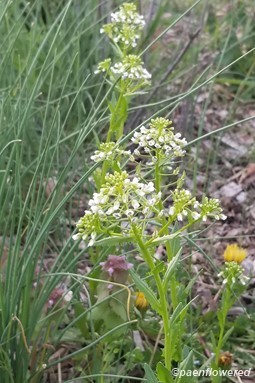
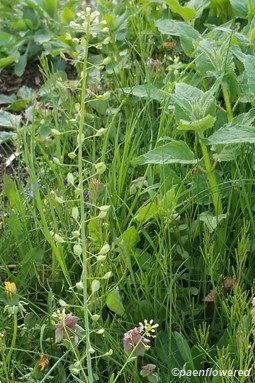
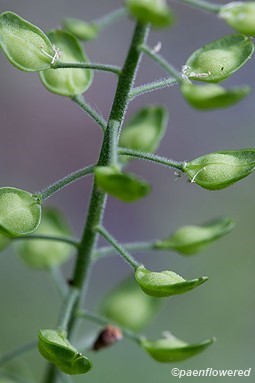
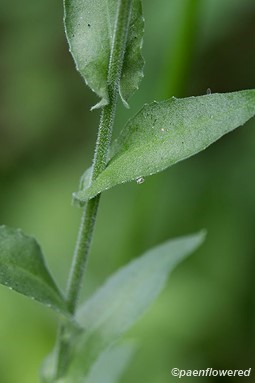
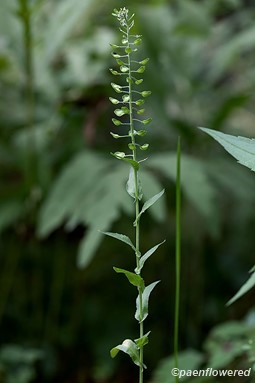


Comments
Have you spotted this plant in your area? We'd love to hear about your experience! Share your comments or questions about the plant below. Comments are moderated before posting.